Potřebujeme váš souhlas k využití jednotlivých dat, aby se vám mimo jiné mohly ukazovat informace týkající se vašich zájmů. Souhlas udělíte kliknutím na tlačítko „OK“.
ASTM C1581/C1581M-09a
Standard Test Method for Determining Age at Cracking and Induced Tensile Stress Characteristics of Mortar and Concrete under Restrained Shrinkage (Includes all amendments And changes 8/24/2016).
Automaticky přeložený název:
Standardní zkušební metoda pro stanovení věku, v praskání a indukované napětí v tahu Charakteristika Malta a beton pod zdrženlivý smrštění
NORMA vydána dne 1.7.2009
Informace o normě:
Označení normy: ASTM C1581/C1581M-09a
Poznámka: NEPLATNÁ
Datum vydání normy: 1.7.2009
Kód zboží: NS-11920
Počet stran: 7
Přibližná hmotnost: 21 g (0.05 liber)
Země: Americká technická norma
Kategorie: Technické normy ASTM
Kategorie - podobné normy:
Anotace textu normy ASTM C1581/C1581M-09a :
Keywords:
Cracking, restrained shrinkage, ring test, shrinkage, tensile stress, Concrete, Cracking, Mortar, Ring test procedures, Shrinkage, Tensile strength/stress, ICS Number Code 91.100.30 (Concrete and concrete products)
Doplňující informace
| Significance and Use | ||||||||||||||||||||||||||
|
This test method is for relative comparison of materials and is not intended to determine the age at cracking of mortar or concrete in any specific type of structure, configuration, or exposure. This test method is applicable to mixtures with aggregates of 13-mm [0.5-in.] maximum nominal size or less. This test method is useful for determining the relative likelihood of early-age cracking of different cementitious mixtures and for aiding in the selection of cement-based materials that are less likely to crack under retrained shrinkage. Actual cracking tendency in service depends on many variables including type of structure, degree of restraint, rate of property development, construction and curing methods, and environmental conditions. This test method can be used to determine the relative effects of material variations on induced tensile stresses and cracking potential. These variations can include, but are not limited to, aggregate source, aggregate gradation, cement type, cement content, water content, supplementary cementing materials, or chemical admixtures. For materials that have not cracked during the test, the rate of tensile stress development at the time the test is terminated provides a basis for comparison of the materials. |
||||||||||||||||||||||||||
| 1. Scope | ||||||||||||||||||||||||||
|
1.1 This test method covers the laboratory determination of the age at cracking and induced tensile stress characteristics of mortar or concrete specimens under restrained shrinkage. The procedure can be used to determine the effects of variations in the proportions and material properties of mortar or concrete on cracking due to both drying shrinkage and deformations caused by autogenous shrinkage and heat of hydration. 1.2 This test method is not intended for expansive materials. 1.3 The values stated in either SI units or inch-pound units are to be regarded separately as standard. The values stated in each system may not be exact equivalents; therefore, each system shall be used independently of the other. Combining values from the two systems may result in non-conformance with the standard. 1.4 This standard does not purport to address all of the safety concerns, if any, associated with its use. It is the responsibility of the user of this standard to establish appropriate safety and health practices and to determine the applicability of regulatory limitations prior to use. (Warning—Fresh hydraulic cementitious mixtures are caustic and may cause chemical burns to skin and tissue upon prolonged exposure. ) |
||||||||||||||||||||||||||
| 2. Referenced Documents | ||||||||||||||||||||||||||
|
Podobné normy:
Historická
1.12.2013
Historická
1.7.2010
Historická
1.12.2013
Historická
15.12.2013
Historická
1.4.2013
Historická
15.6.2010
Odebírejte informace o nově vydaných normách ZDARMA:
Chcete pravidelně odebírat informace o nově vycházejících normách z celého světa a to zcela zdarma?
Přihlašte se k odběru. Vše je velice jednoduché a absolutně ZDARMA.
Na výběr máte vydavatele z celého světa.


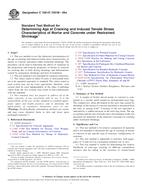
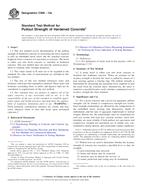 ASTM C900-13a
ASTM C900-13a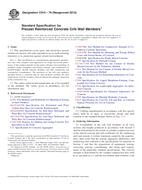 ASTM C915-79(2010)..
ASTM C915-79(2010)..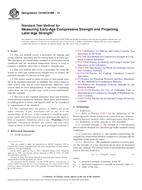 ASTM C918/C918M-13..
ASTM C918/C918M-13..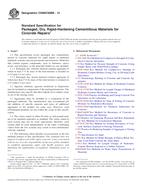 ASTM C928/C928M-13..
ASTM C928/C928M-13.. ASTM C935-13
ASTM C935-13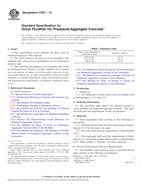 ASTM C937-10
ASTM C937-10
 Cookies
Cookies
